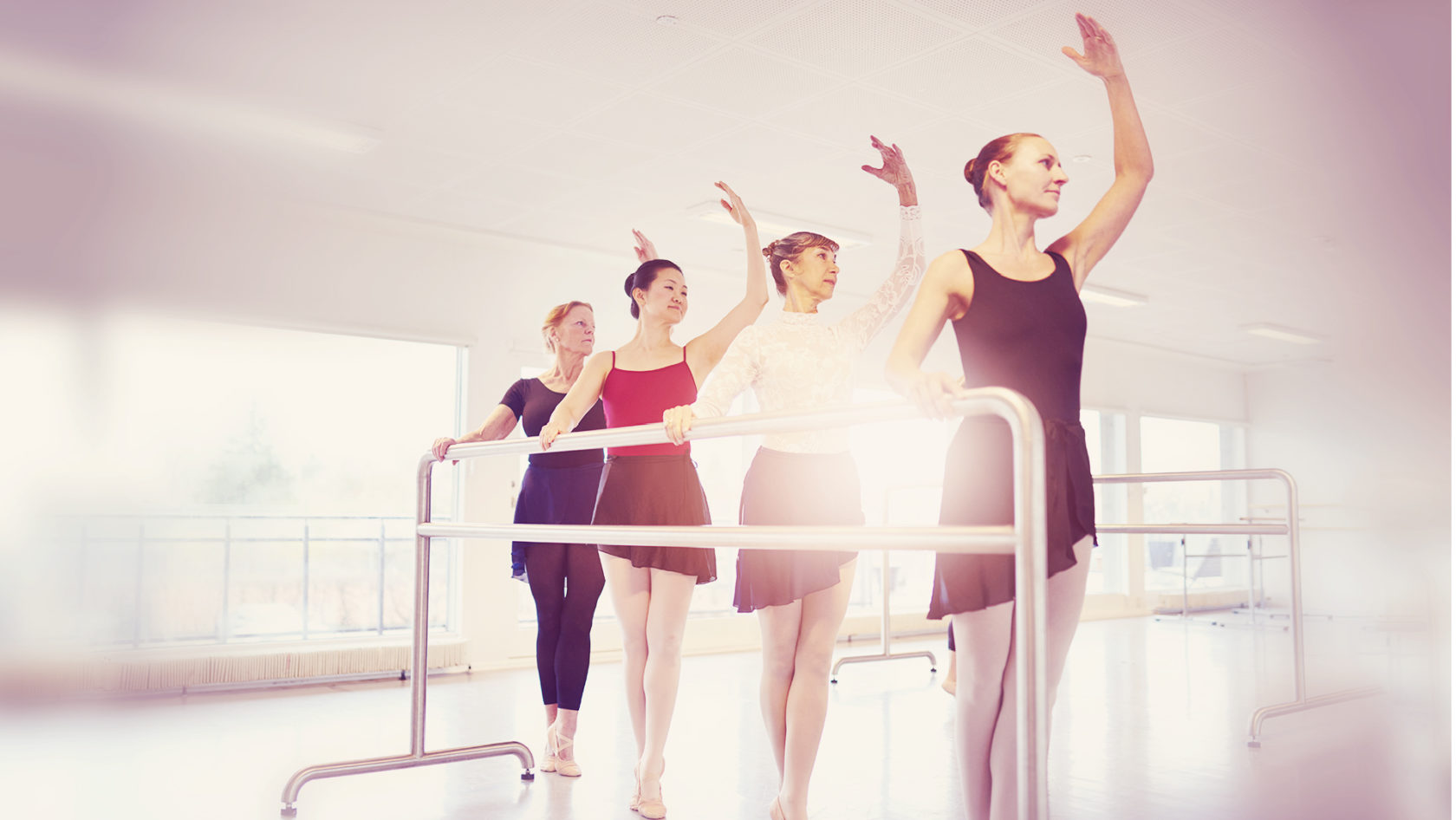I have written about the importance of teaching the proper use of demi pointe before. In that article, I mention how often I find myself “screaming” about it over and over and over again because it is crucial for students to get it. So much of technique hinges on how we move through and stand on our feet. This concept is simply too large to brush past.
That article was specifically aimed towards the younger student and their natural progression through ballet. I would like to switch gears slightly and focus the spotlight on adults who are new to ballet. While the concept is the same, the approach is a bit different, mainly due to age, the habits they have developed over the years, and the need mature joints and muscles have for more warming up.
Lay the Foundation
- While most adults know the different parts of the foot, it is important to not assume anything. I refer and point to the five most important parts of the foot they need to know in order to dance safely (toes, ball, arch, heel, ankle). I also speak about the metatarsals.
- I give them the needed vocabulary so we can speak quickly about the foot. Terms like ‘sickle’ (or ‘supinate’) and ‘pronate’ and ‘articulate’. I need them to know what these words refer to so we can all be on the same page and quickly assess their individual needs.
- I hone in on developing their coordination of pointing and flexing. But I require more of them that simply the actions ‘point/flex’. They need to be able to work through the foot completely. So, when they flex, I encourage them to push the heels forward. When they point, I encourage them to move through the metatarsals and stretch the top of the foot long.
Warming Up the Feet
- I find adults do so well when given the proper time to push out the daily rut/responsibilities of life and get in tune with their bodies. For this reason, I have them do a simple self foot massage as a way to wake up the feet for ballet. We might also roll a tennis ball under the foot to better get the circulation going.
- Sitting down, we will do some pointing and flexing and also ankle circles. Standing up, we will do weight shifting from one foot on demi pointe (knee bent) to the other foot. This little shift can turn into more of a bounce that can eventually lead to a full out hop (basically just jogging but using the feet entirely).
Establish Demi Pointe
- At the barre, before even teaching the concept of legs remaining stretched in tendu, I teach moving through the demi pointe. We will pause in that position and make sure everyone knows where it is, how to arrive there, and how to push to full pointe/pull back to demi pointe.
- We will do some rises at the barre in parallel and then in 1st to help them understand how demi pointe should feel and how they should attempt to stand on their highest demi pointe always. After these rises, I will teach them how to stretch out the calf muscles.
Additional Notes
- Because these are newbies to ballet I allow for quarter pointe. My goal is to not strain the muscles so, while they know the highest demi pointe is the aim, it is wise to listen to the body and dance more gently, if need be. As strength and mobility increase, demi pointe will be easier to attain and maintain.
- An overall heightened awareness of their feet is what I am after. I will do a lot of movements that help build that awareness: ballet walks/runs, waltzes, sautés with the emphasis landing through the feet, balances on one foot (demi pointe or flat—either one puts a lot of focus on the supporting foot), etc.
Adult beginners are excellent students when given the tools they need. Those tools can be identical to the ones our younger students use, but they can also be different. Because adults are generally able to grasp concepts on a mental level more quickly than kids, we can easily forget they tend to need more time than kids to transfer that knowledge to their bodies.
Regardless of how quickly or slowly your adult students learn and progress, one thing is for certain: demi pointe, just like with younger students, must be prioritized if we want to have safe, strong, and beautiful dancers. Which, of course, we do!
Related Articles


Comments
Ione Barczak- Dance Domain says
Lovely article. It points to all important aspects of proper and safe development of footwork for ballet dancers. And Robyn's approach to teaching is a must. Really happy to see more of us dedicated to teaching adults!
Add Comment